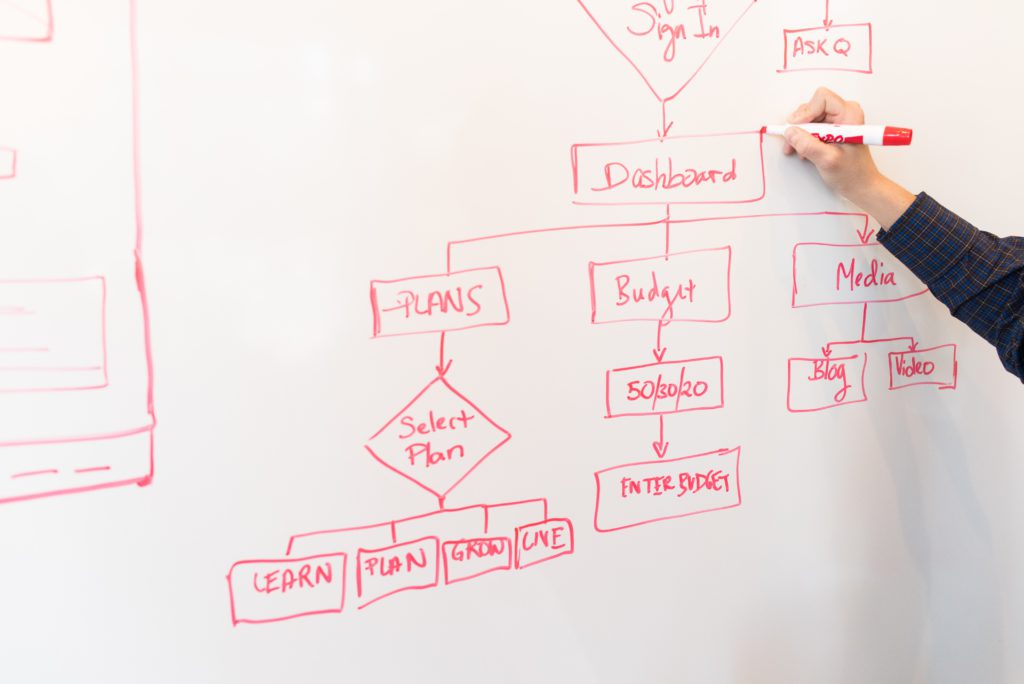This article discusses the concept of design thinking, its benefits, and how it can be used in various areas of business. Design thinking is a methodology that encourages teams to use creative problem solving and brainstorming solutions in order to create innovative solutions for businesses. It relies on employing a design thinking process that identifies the problem, interacts with people and their environments, and encourages teams to come up with ideas. This methodology can be used in remote work environments, where traditional problem-solving methods may not be able to reach the desired outcome. The design thinking process relies heavily on people, environment and culture in order to create an innovative solution. Design thinking is becoming increasingly popular as it encourages people to think critically and create unique solutions which can increase employee engagement and satisfaction.
It is a process that shifts design thinking from traditional engineering solutions to being business centric and customer centric. Design thinking means to think critically about design and put the customer at the centre of the process; trying to understand their needs, wants, and motivations in order to create a product or service that caters to them. The process starts with generating ideas by observing cultural phenomena and talking with people who are not just customers, but also managers or stakeholders who understand the problem from different angles. It can help define problems faced by users and identify potential obstacles that need to be overcome in order to create an effective solution. This can involve exploring assumptions made about customers, testing new ideas, and creating prototypes of potential solutions. Design thinking allows people working on a project to break down problems into manageable chunks so it is easier for them to work on solving it collaboratively.
It is an iterative process that helps designers and engineers to brainstorm many ideas for the project and create prototypes for testing. Design thinking helps knowledge workers to quickly come up with low fidelity experiments and innovative new solutions. It also helps them to redefine the problem and identify alternative strategies or solutions. This allows them to better understand the mindsets, needs, and ways of people who will be using the product or service. This approach also provides learning opportunities while tackling problems in a user-centric way. All of these factors have made design thinking very popular in recent years as it has been found to be a great way for teams to collaborate on finding creative solutions to complex problems.
Design thinking helps designers work through processes to ultimately focus on design products that are user-centric and help improve the consumer experience. It also sheds light on the process of design learning and how it can be applied to solve real user problems. Design thinking involves establishing a design thinking culture by applying human centred design, processes and strategies to create products or services that meet customer needs. This approach can be applied on a company-wide scale, allowing everyone in an organisation to think in terms of ways to improve the customer experience by considering their needs first. This approach has been particularly effective for companies like Apple, where they have used design thinking as a way to order their product development efforts and prioritise customer needs over technological features.

Overall, design thinking is an incredibly powerful tool for teams who want to create better products or services based on user insights. By encouraging collaboration and creativity throughout the organisation, companies can use this approach to develop innovative solutions that are tailored for their customers’ needs.
Design thinking is a rather revolutionary way of creating products, services, and experiences that can solve the biggest problems faced by customers, clients, students, and users. The first step to this process is to understand the unmet needs of people. Companies can use design thinking to overcome cognitive fixedness in order to come up with unique ways of solving problems. Design Thinking has become so popular because it helps companies want their customers’ needs at the heart of what they do.
It is essentially a process framework that allows companies to instil the designer’s perspective into their decision-making process. It helps them to explore use cases, conduct research and devise new ways of solving problems. Design thinking can be used in varied business problems, as it helps organisations derive solutions through innovative methods. It combines research, ideation and solutions generation with an understanding of the user experience – so that organisations can find the best ways to meet customer needs while meeting their own business goals.
Design Thinking uses brainstorm solutions to align team ideas and individual brainstorming to share ideas and have insights. It also uses design criteria teams, experience produces data, using design criteria, agree teams, and customer experience while negotiating compromises. Design Thinking helps to gather participants and help teams work together to solve problems. The process leads with data: data leads to insights which lead to ideas that can be tested and refined.
Design Thinking is a creative process that encourages diverse teams to discuss and hold ideation sessions. It is ideal for innovation because it helps focus the conversation on possibilities rather than the constraints. It begins with a focus on design criteria, then encourages participants to come up with as many new angles as possible while holding designers accountable for key features in order to achieve the desired outcome.
It is an iterative process, incorporating feedback from stakeholders and end consumers to maximise value. Design thinking workshops are becoming increasingly popular among innovation teams, as they help organisations to develop groundbreaking ideas. This workshop involves a designer, technologist and business strategist, who together take part in the entire design thinking process – from understanding the specific problem or new product idea to creating a prototype or solution. WeWork is one example of a company that has implemented design thinking into its innovation team in order to boost employee retention and growth innovation.

